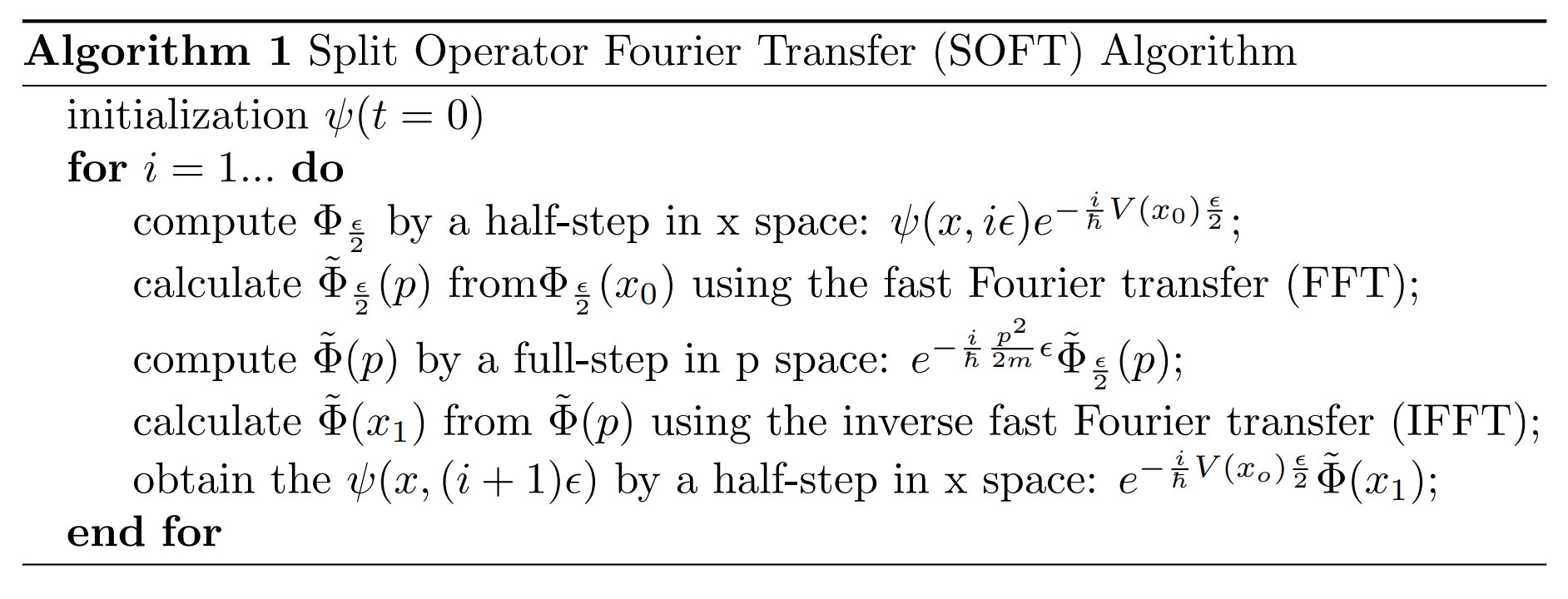Numerical Solution of 1D Time Dependent Schrödinger Equation by Split Operator Fourier Transform (SOFT) Method
Contents
Numerical Solution of 1D Time Dependent Schrödinger Equation by Split Operator Fourier Transform (SOFT) Method#
Go back to the interactive notebook
Source code: https://github.com/osscar-org/quantum-mechanics/blob/master/notebook/quantum-mechanics/theory/theory_soft.ipynb
Background theory#
In previous notebooks, we focus on numerical solutions of the time-independent Schrödinger equation. Here, we demonstrate the numercial solution of the one-dimensional time dependent Schrödinger equation. The split operator Fourier transform (SOFT) was employed.
Propagation operator
Let's consider a time-independent Hamiltonian and its associated time-dependent Schrödinger equation for a system of one particle in one dimension.The time evolution of the eigenstates can be formulated as:
For a small time \(\Delta t\), the evolution of the wavefunction from \(t=0\) to \(t=\Delta t\) can be formulated as:
and where the \(U(\Delta t)\) is called the unitary propagation operator. The \(U\) is Hermitian, which fulfills the condition:
The time-evolution operator is also reversible or symmetric in thime:
Split operator Fourier transform
We know that this equation admits at least a formal solution of the kind $|\psi(t)> = \exp\biggl[-\frac{i}{\hbar}\hat{H}t\biggr]|\psi(0)>$ that projected on the coordinate basis gives the (still formal) solution $\psi(x_t,t) = \int dx_0 K(x_t, t; x_0, 0)\psi(x_0,0)$ where $ K(x_t, t; x_0, 0)= < x_t|\exp\biggl[-\frac{i}{\hbar}\hat{H}t\biggr]|x_0 > $ Note that $x_t$ and $x_0$ are just labels for the coordinates, as if we had $x$ and $x'$.Let us then focus on the single step propogator.
We can use the Trotter approximation to write:
where, \(< p | x_0 > = \frac{1}{\sqrt{2\pi\hbar}}e^{-\frac{i}{\hbar}Px_0}\).
By interating N times, we can obtain \(\psi(x,t)\). In summary, the split operator Fourier transfer algorithm can be conducted into five step as shown below:

